Growing a house in a rosemary pot is not only interesting, but also a useful activity. The plant is used both as a spice and as a natural medicine. Decorative bush allows you to decorate the apartment.
Material Content:
Rosemary: the nuances of growing a potted house
If the plant is not created comfortable conditions, it begins to gradually lose its attractiveness and useful properties. Ideally, grow a flower in the winter garden, but in its absence you can do it in the apartment. Rosemary in good conditions becomes a tree, which should be considered when choosing a plant.
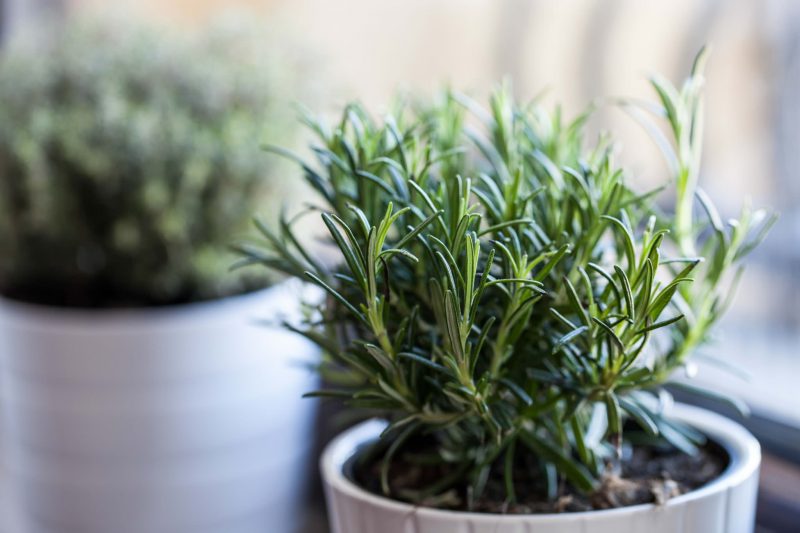
It is also worth remembering that if improper care is carried out, it begins to hurt and may die. In the summer, it is necessary to take the flower to fresh air. This will improve the development of the bush, increase the content of useful substances in it.
Planting a plant
From how well the flower is planted, its further development depends. Errors at the planting stage lead to the fact that rosemary begins to wither and may die.
Ground and pot requirements
The result of growing a plant depends on the correct choice of pot and soil. Rosemary root is very branched, and the capacity for it needs a spacious one. The roots have a high demand for oxygen, and therefore the material of the pot must be porous. It is best to give preference to clay. Coated pots should not be used. For a young plant, a pot with an average diameter of about 20 cm is suitable.
A special soil is needed for the plant. In a flower shop you can buy lime-based gravelly substrate, but it’s better to prepare the soil for rosemary yourself.
For this, the following components are connected:
- leaf soil - 2 parts;
- soddy soil from which all roots are removed - 2 parts;
- humus - 1 part;
- coarse river sand - 1 part;
- peat - 1 part.
Before a plant is planted, the soil must be very well shed with water.
Homemade Rosemary Care
In addition to competent planting, the plant needs full care, in which fragrant grass will receive everything you need. By the attractive appearance of the plant, you can immediately understand that it is good for him and care for it is sufficient.
Temperature, humidity and lighting
During the growing season, the plant requires an air temperature of +23 to +25 degrees. In winter, rosemary goes into a state of rest, and therefore it requires a decrease in temperature. It should be between +6 and +15 degrees. In the conditions of an apartment it is rare, it turns out, to create the optimum temperature. So that the rosemary growing in the apartment does not suffer from overheating, in winter it should be placed as close to the window as possible. Also, for cooling, you can put next to it a bowl with snow or ice, which, melting, will slightly reduce the temperature around the plant.
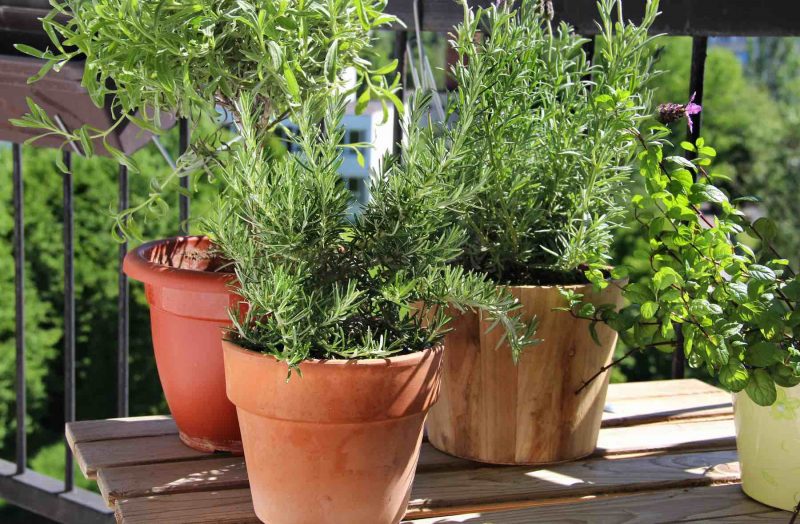
Humidity is an important indicator, since if it is insufficient, the indoor flower begins to turn yellow and wither. In the summer, in most cases, additional humidification for the plant is not required. In winter, due to heating, the air in the room becomes drier, and therefore it is necessary to increase humidity. For this, expanded clay is poured into a tray with a plant, which is moisturized abundantly. Water should not reach the drainage holes of the pot, therefore there is no risk that the plant will rot due to excessive moisture in the soil. At the same time, due to the evaporation of water, the air around the rosemary becomes humid enough for its normal state.
The plant is photophilous and requires intensive lighting for at least 6 hours a day. In order for the crown of the bush to develop evenly, and not one-sidedly, once every 2 days you need to turn the pot 180 degrees. In the summer heat, so that the grass does not receive sunburn, it must be slightly shaded. In winter, lighting should be as intense as possible. It is good to use phytolamps for illumination of the flower, whose light spectrum has a beneficial effect on the growth of indoor plants.
It is interesting:Rosemary: healing properties
Watering a plant
Growing rosemary at home, it should be remembered that it tolerates overdrying easier than waterlogging. However, despite this, the flower should be watered regularly, using well-defended water at room temperature.
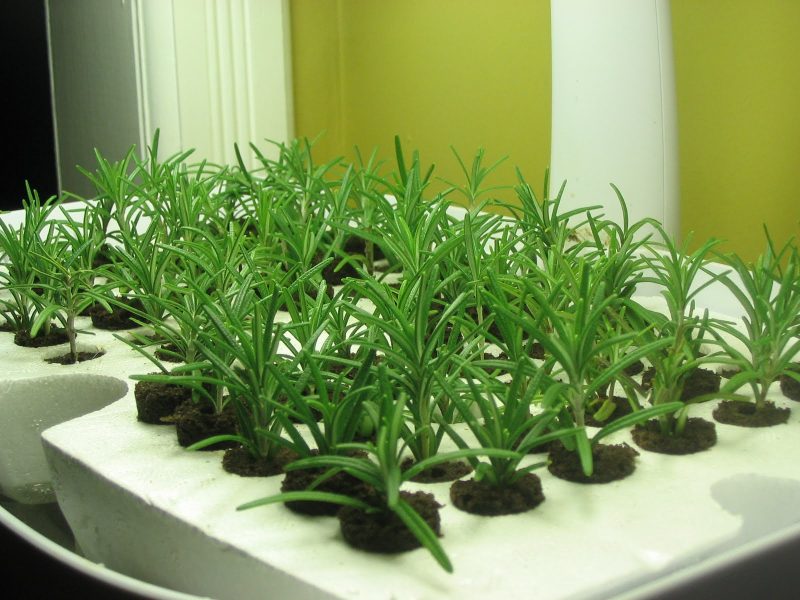
If the plant lacks water, its foliage begins to turn yellow. When there is too much of it, then rosemary begins to discard leaves, which at the same time preserve the green color.
The signal that it needs to be watered is the drying of the top layer of the earth. It is unacceptable to wait until the soil is completely dry. In intense heat in the summer, it is useful to spray grass early in the morning or late in the evening, but not more than 1 time per day. For this, the same water is used as for irrigation.
Fertilizer and fertilizer
Rosemary is fed 1 time per month during the growing season from spring to November, using complex fertilizer for indoor plants. It should be bred in a double volume of water compared to the instructions. It is also useful to pour 2 times a season with an aqueous solution of bird droppings prepared at the rate of 1:30.
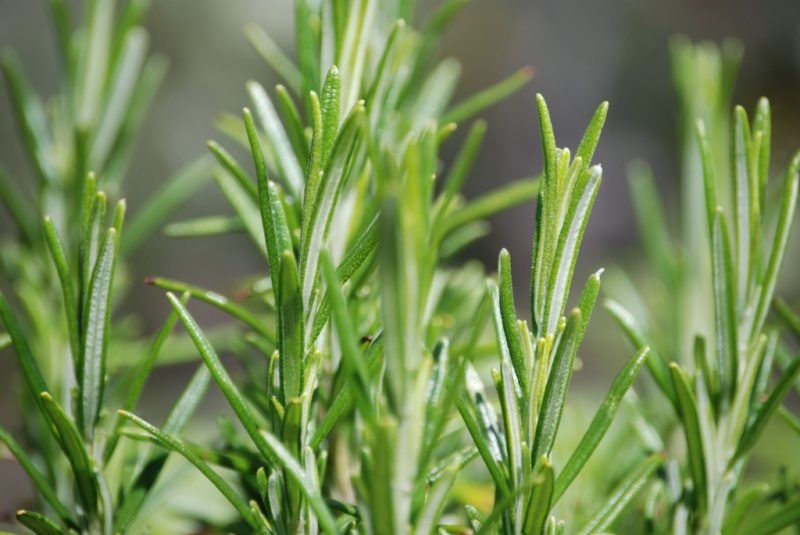
In the winter, feeding rosemary is extremely undesirable. If it begins to weaken due to a lack of nutrients, then a one-time feeding with a complex composition is allowed. This phenomenon usually occurs when the plant has not been transplanted in a timely manner.
Transfer
Up to 5 years, rosemary is very actively building up the root system. For this reason, in the early years it must be transplanted every April into a pot, which will be 5-7 cm wider than the previous one. After 5 years, the flower is replanted once every 3 years, also in April.The pot in this case should be 10-12 cm wider than the previous one.
Rosemary Propagation
Breeding a plant through seeds at home is quite problematic, and therefore the cuttings are mainly used. To obtain new plants, apical shoots are cut 7.5 cm long. They should be cut with sharp scissors at an angle of 45 degrees. The cuttings are moistened in clean water and roll off the cut in the root powder. Then the excess powder is shaken off and the cuttings are planted in moist peat. The container with them is covered with a plastic bag, since greenhouse conditions are necessary for rooting. Roots appear in a month or a little earlier. Further care is carried out according to the standard scheme.
The main problems when growing
The main problem that the florist may encounter is powdery mildew. She, due to the peculiar leaves of rosemary, does not appear in the usual way. As a result of this, remaining unnoticed, the disease progresses, and the plant dies from it. You can suspect a problem by browning leaves. Growing rosemary in an apartment can also be complicated by a higher temperature than it needs in the winter, when the plant should be at rest.
Pests and diseases
Rosemary is not prone to disease, and only with excessive moisture it develops downy mildew. This problem is eliminated by normalizing the irrigation mode.
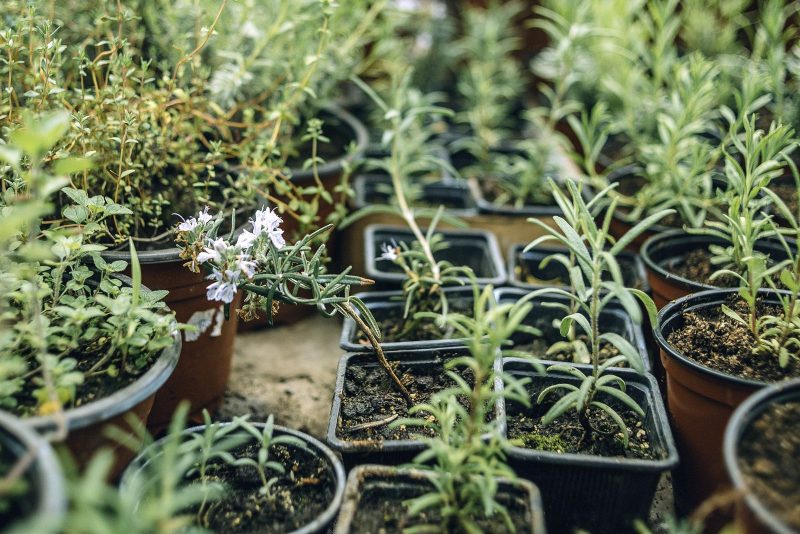
From pests may appear:
- scale shield;
- spider mite.
They fall on the flower in the summer months when it is on the street. To get rid of parasites, you need to wash the plant with the use of laundry soap. Chemical preparations are required only with a plentiful amount of pests.
Growing rosemary on your windowsill is not easy, but quite possible.












